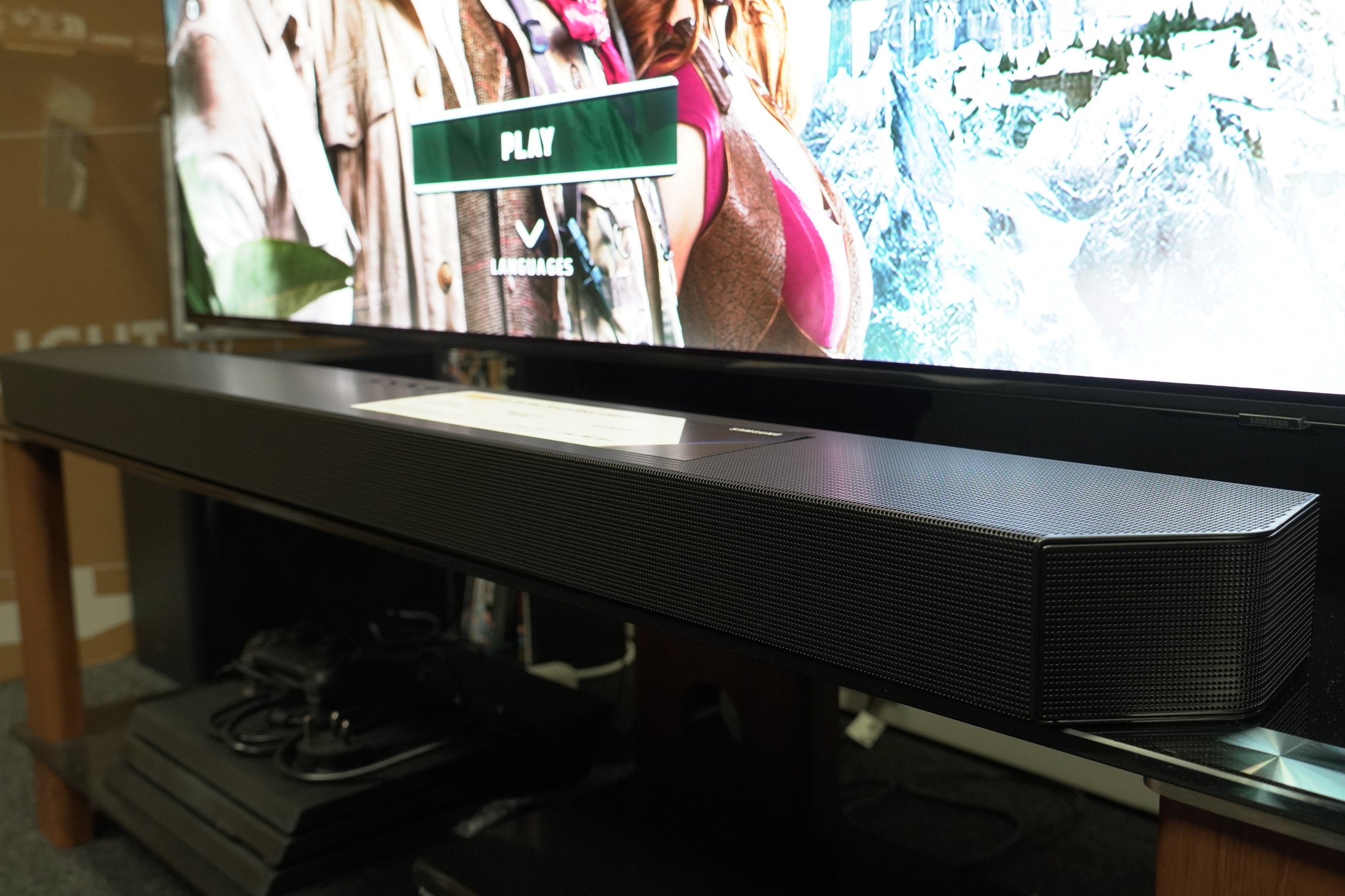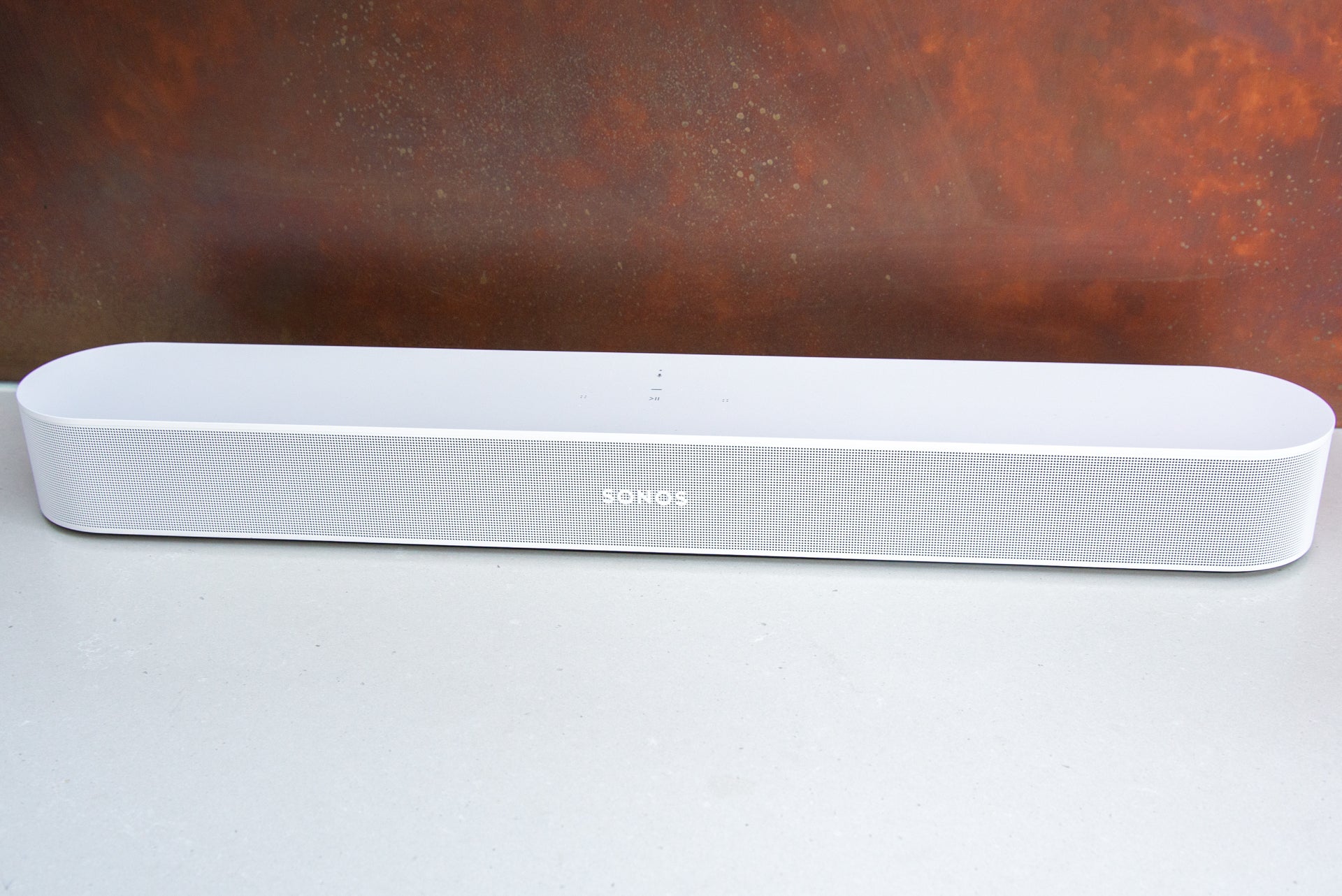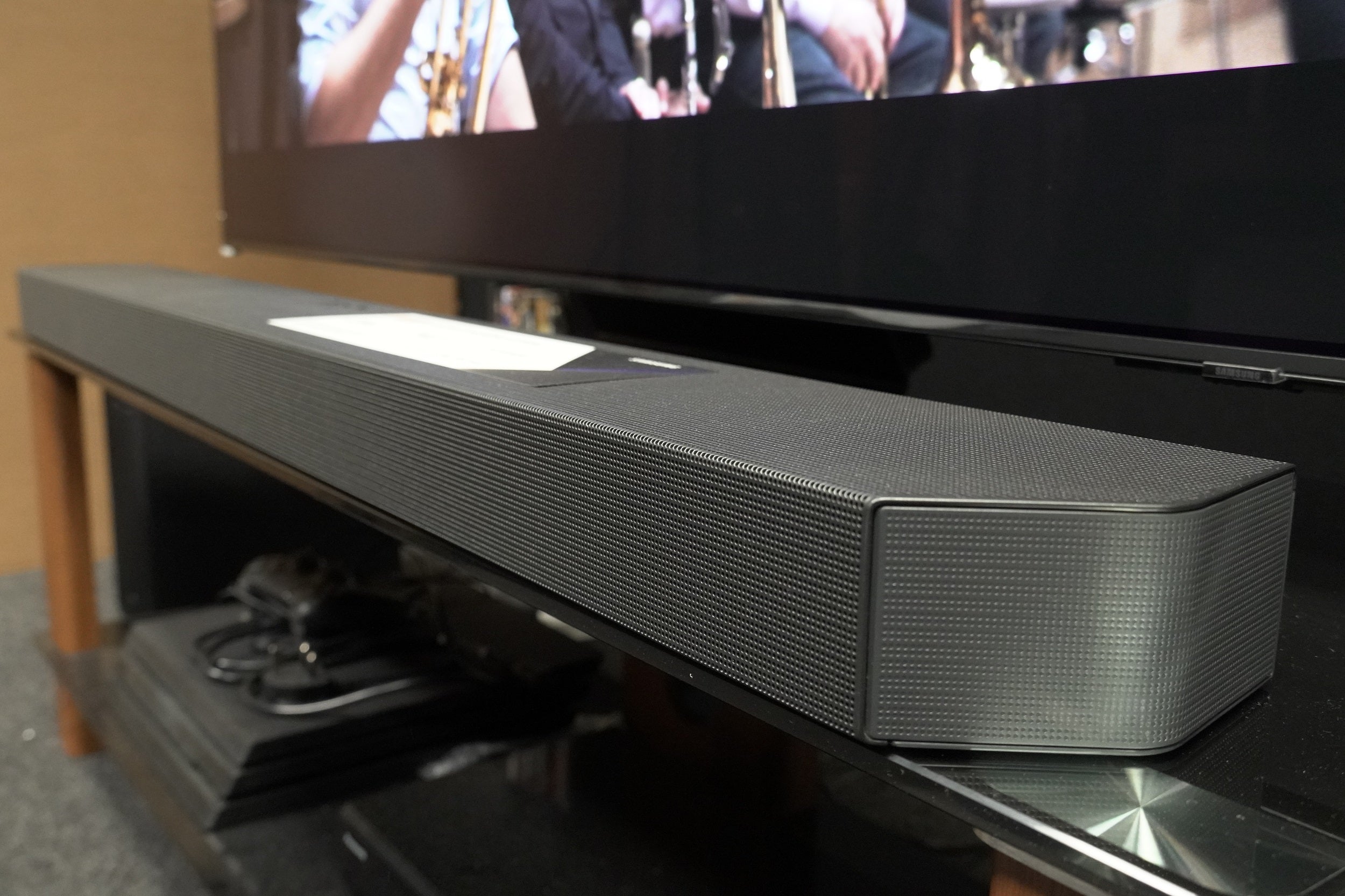Samsung HW-Q800A Review
A powerhouse soundbar for the up-front crowd
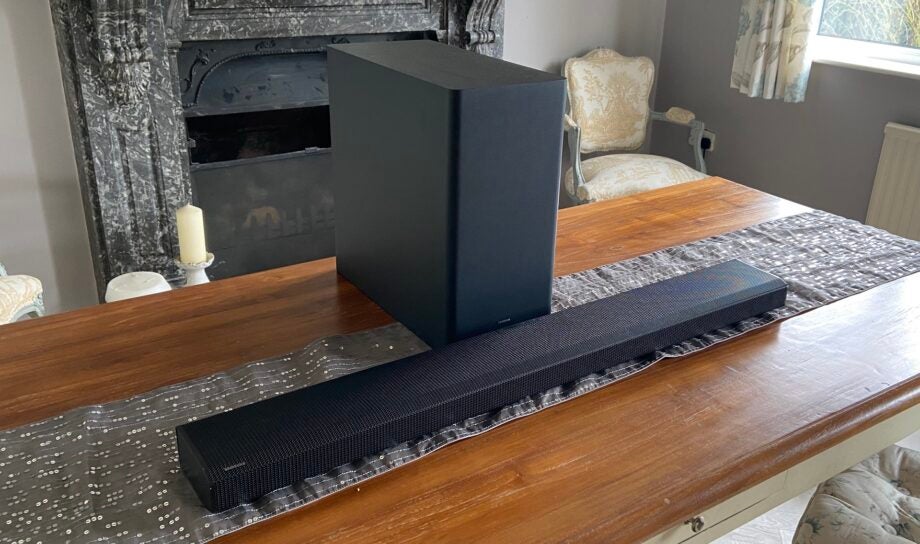

Verdict
While the Q800A’s speaker set up and power hasn’t changed significantly from that of its impressive Q800T predecessor, a couple of key extra features and improvements to its optional rear speakers make it ultimately a more substantial step forward than it initially appears.
Pros
- Sound has enough power and projection to fill a good-sized room despite the lack of rear speakers
- Strong upgrade path available
- Surprisingly compact design for the amount of power it delivers
Cons
- Needs a Samsung TV as well to unlock its best performance
- No 4K/120 pass through
- Not quite as good for music as movies
Availability
- UKRRP: £649
- USARRP: $699
- EuropeRRP: €595
Key Features
- Upgrade pathOptional 2.2 rear channels speakers available
- Samsung TV supportQ Symphony feature with compatible Samsung TVs
- Audio formatsDolby Atmos and DTS:X playback
Introduction
Samsung currently rules the high-end soundbar market – at least for AV fans who value movie sound above music – with its phenomenal, 16-channel HW-Q950A.
At the time of writing, though, the Q950A will set you back a cool £1,300. A price likely to be far beyond the budget of most movie-loving households.
Cue the Samsung HW-Q800A. This still delivers that combination of epic, action movie-loving power and detail that’s become something of a Samsung trademark while costing barely half as much as its flagship sibling. The only catch being that you won’t hear anything coming from behind you.
Design
- Two-component system
- Two HDM inputs, with eARC support
- Up- and side-firing drivers in the rears
The Q800A comprises two components: the main soundbar and a chunky wireless subwoofer. The main soundbar is slim enough to slot beneath most of today’s TVs – though note that since it carries two up-firing height channel drivers, its top edge needs to stand forward of the TV’s front rather than actually pushing under it.
The soundbar’s robust grilled finish looks serious but attractive, and the top edge angles down cutely at the front of the top edge. There’s no angling of the soundbar’s ends like there is with the main soundbar on the Q950A, reflecting the fact that it delivers fewer channels.
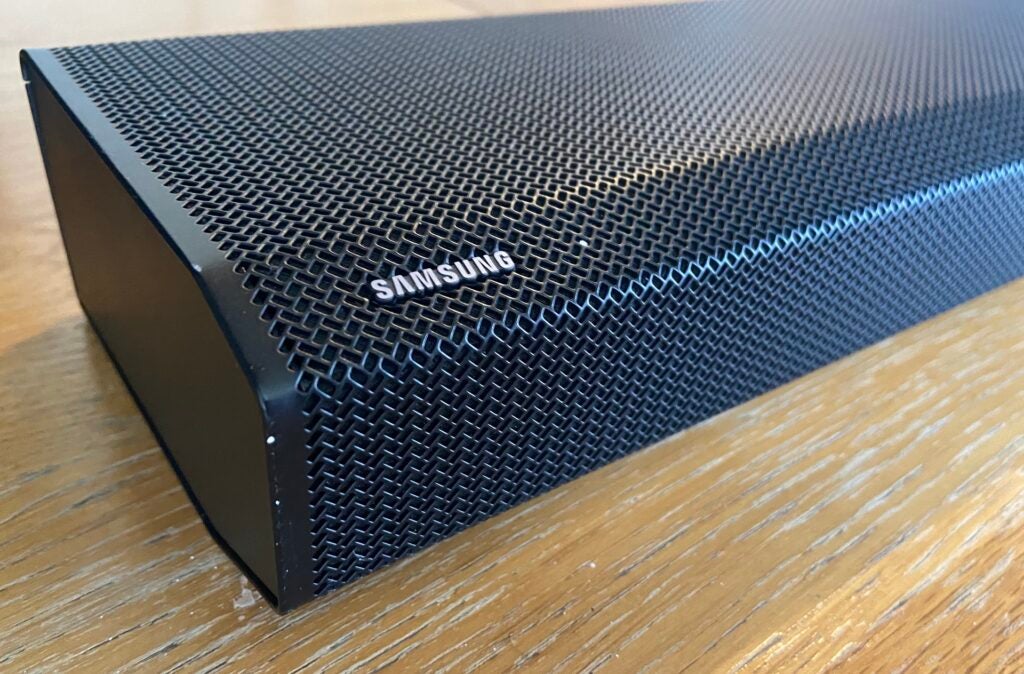
The subwoofer sports almost the exact opposite of the slender, refined look of the main soundbar. It’s chunky, angular, and basically looks as if Samsung expects it to be tucked down the side of a sofa or under a sideboard rather than left in plain sight. Personally, I don’t mind the subwoofer’s relative bulk, though, as you usually need plenty of space for lots of bass. Plus the pleasingly epic 8-inch driver built into its side had to go somewhere!
Connections tucked away in a slightly tight space on the soundbar’s underside are two HDMI inputs, an HDMI output, an optical digital audio input, and a 5V USB port. The HDMI output supports eARC for lossless Dolby Atmos or DTS:X sound from eARC-capable TVs, while the HDMI passthrough can carry the HDR10+ and Dolby Vision active HDR formats, as well as the standard HDR10 system.
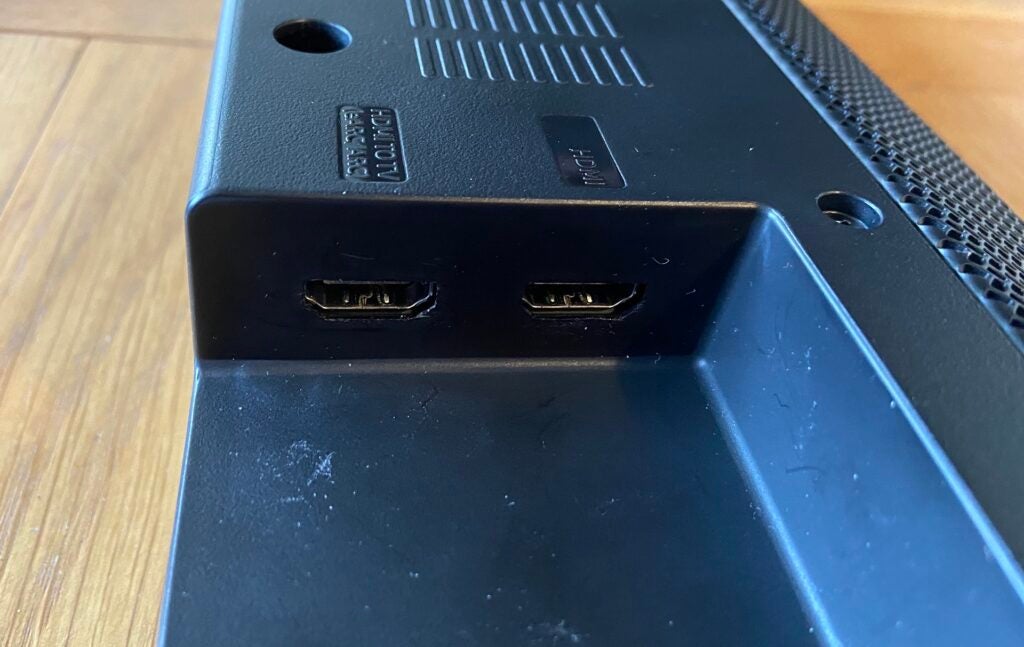
The Q800A will not, however, pass on 4K/120Hz or variable refresh rate signals from the latest generation of consoles. So you’ll have to attach these devices directly to your suitably capable TV, and use the eARC feature to pass the audio from the TV to the soundbar.
One final happy note finds the Q800A carrying a small LED read out on its front edge. There’s no repeat of the daft Q950A situation where the read out sits in the top edge of the soundbar, where you can’t see it while sat on your sofa.
Features
- Dolby Atmos and DTS:X playback
- 330W total power across 3.1.2 channels
- Optional rear speakers available
The Samsung HW-Q800A delivers 330W of total audio output across a 3.1.2 channel configuration. That breaks down as front left, front right, front centre and two up-firing drivers in the main soundbar, plus the external subwoofer delivering the ‘.1’ bass channel. The up-firing drivers are designed to bounce their sound off your ceiling to create a sense of the overhead effects associated with Dolby Atmos sound mixes.
The Q800A can play DTS:X object-based sound as well as Dolby Atmos – though it doesn’t join one or two soundbar rivals in supporting the IMAX Enhanced version of DTS:X.
You’d be forgiven at first glance for thinking that the Q800A is just a rebadge of its Q800T predecessor. The design, power, and channel count are the same. There are a couple of new features, though, that should give the Q800A an advantage.
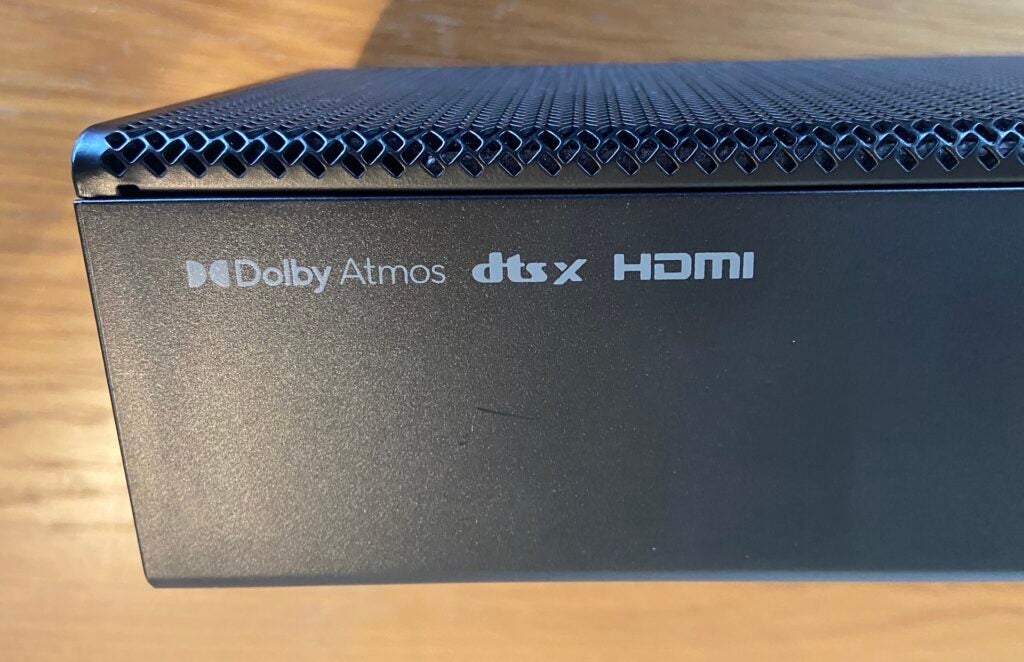
First, if you decide at some point that you’d like to add some rear channel action to the Q800A, Samsung now provides an improved upgrade path in the shape of the £249 SWA-9500S optional rear speakers. These improve over the optional rears made available for the Q800A’s HW-Q800T predecessor by including up-firing drivers as well as the expected forward facing drivers. This enables an upgraded Q800A to produce a more complete Dolby Atmos 3D ‘dome’ of sound, where height effects from the optional rears meet the height effects from the main soundbar.
The other significant area of improvement comes from new Adaptive Sound+/Space Fit features. These are designed to offer a degree of room optimisation for the Q800A’s audio – though they only work if you’re got the Q800A connected to a compatible recent Samsung TV, since the soundbar doesn’t have its own built-in mic or source-analysing ‘brain’.
Also, the ‘calibration system’ is in truth more about achieving the optimal performance balance between the soundbar and a compatible TV when using Samsung’s Q-Symphony feature. Q-Symphony, if you’re not familiar with it, allows the speakers in a Samsung TV to join those in the soundbar, expanding the soundstage.
Another new feature for the Q800A that’s been borrowed from Samsung’s TVs is the Automatic Voice Amplifier. When active, this monitors levels of background noise and increases the volume of dialogue to compensate, so you don’t miss anything important.
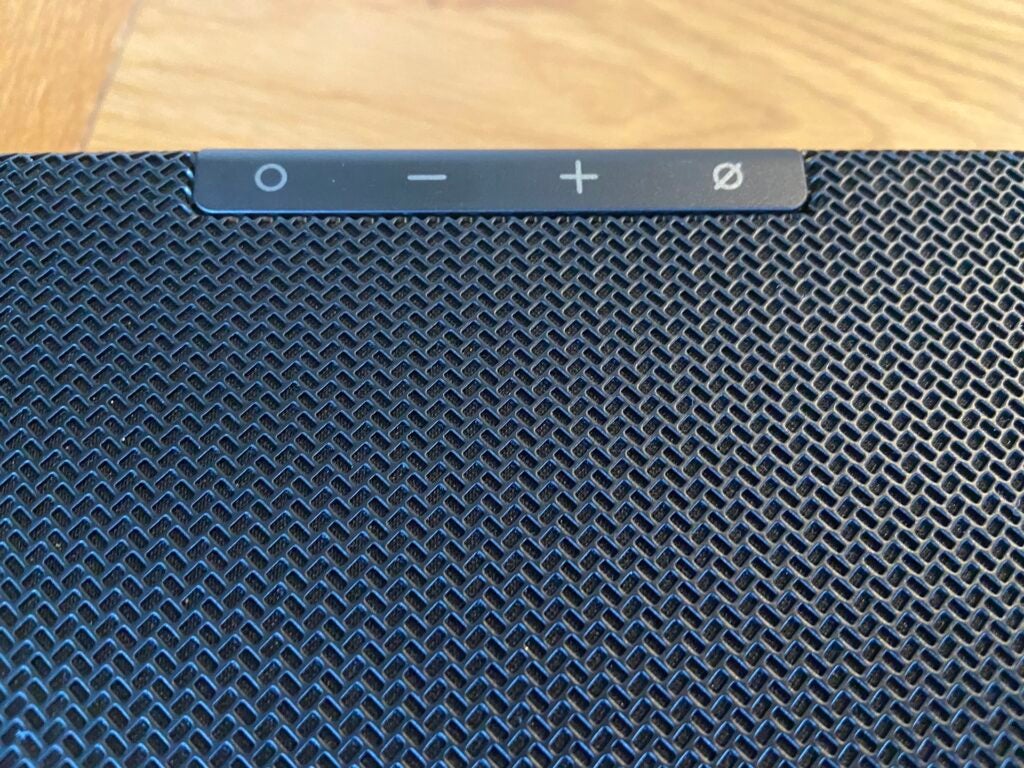
Setting the Q800A up is much easier than it has been with previous Samsung generations thanks to its compatibility with Samsung’s SmartThings app. Available for iOS as well as the Android platform preferred by Samsung phone and tablets, SmartThings is also your route to streaming music to the soundbar from services such as Deezer, Amazon Music, Spotify and even Samsung’s own Samsung Music service.
As you would expect of any premium modern soundbar, the Q800A supports Bluetooth and AirPlay2 as well as Wi-Fi.
When you’re listening to a Dolby Atmos or DTS:X soundtrack on the Q800A, it locks you into that. You can’t switch to any other setting. With any lesser source, though, you can choose to enjoy it in a variety of different modes beyond the Standard one that merely plays it in its original format.
These modes essentially try to remix the sound so that it takes more advantage of all the power and channels the soundbar has at its disposal.
Gamers, finally, may be pleased to learn the audio presets include a Game Pro option that does a pretty nice job of making gaming environments sound more intense, immersive, and immediate.
Performance
- Powerful, aggressive performance
- Sounds tall and wide
- Not as musical as rivals
The HW-Q800A rips into a good movie mix with all the gusto I’ve come to expect from a premium Samsung soundbar. This is especially true, as you’d hope, if that mix is a Dolby Atmos one. Not least because the Q800A’s upfiring drivers do an impressively aggressive and detailed job of adding genuine verticality to the presentation.
In fact, the Q800A does such a great job all round of casting sound away from its bodywork that you no longer feel as if you’re listening to a speaker. Instead you feel like you’re just immersed in a film’s audio world. Exactly as you should be.
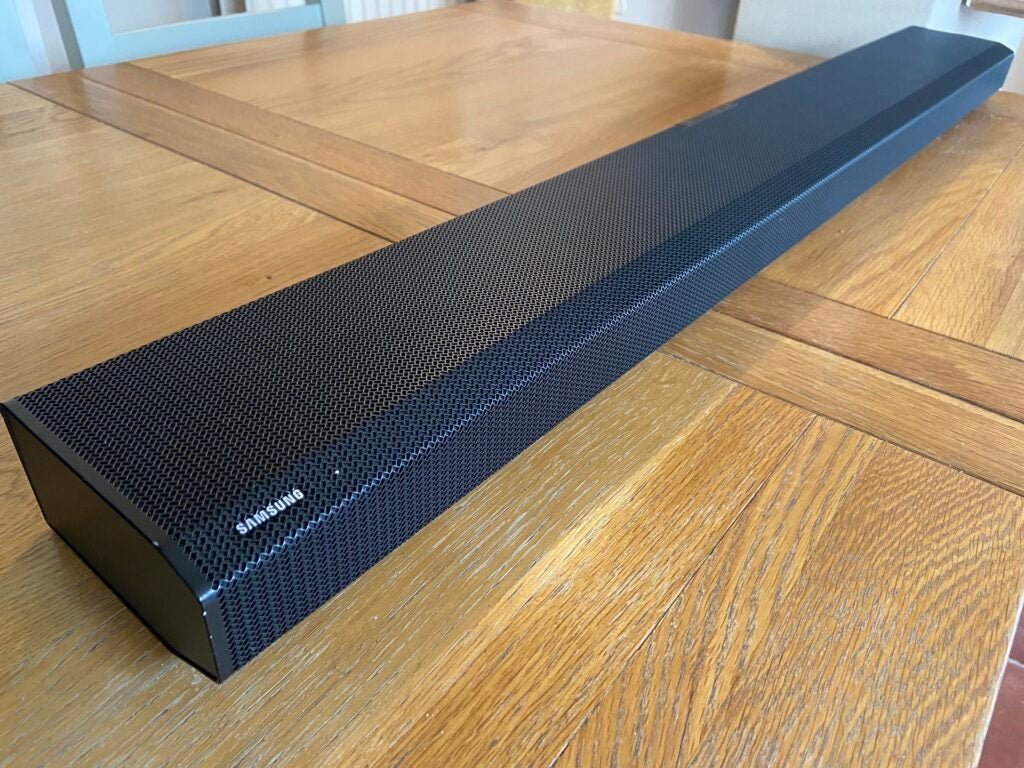
It’s not just that the Q800A has the power and dispersive characteristics to throw sound high and wide that makes it so effective, either. It also does impressively well at both presenting very subtle details in a mix, and accurately positioning specific placement details to create a sense of space beyond the onscreen action.
The handling of details extends to potent, seamless, and credible transitions around the sound stage, no matter what direction a noisy object might be travelling in.
Dialogue always sounds supremely clear and natural, too. Shrill female voices don’t slide into harshness, while deep, rounded male voices never sound boxed in, buzzy or ‘boomy’. Vocal tracks sound pleasingly contextualized too, rather than as if they’ve been artificially dubbed over the rest of the action.
Bass handling is outstanding by soundbar standards. Rumbles run deep and sustain that depth without crackling or dropouts under even the most extreme pressure. Yet the subwoofer is also nimble enough to provide some genuine flexibility in how deep it runs and how much weight it has in the mix. This means it almost always feels like it’s part of the wider mix, rather than just hanging baggily off the bottom of it.
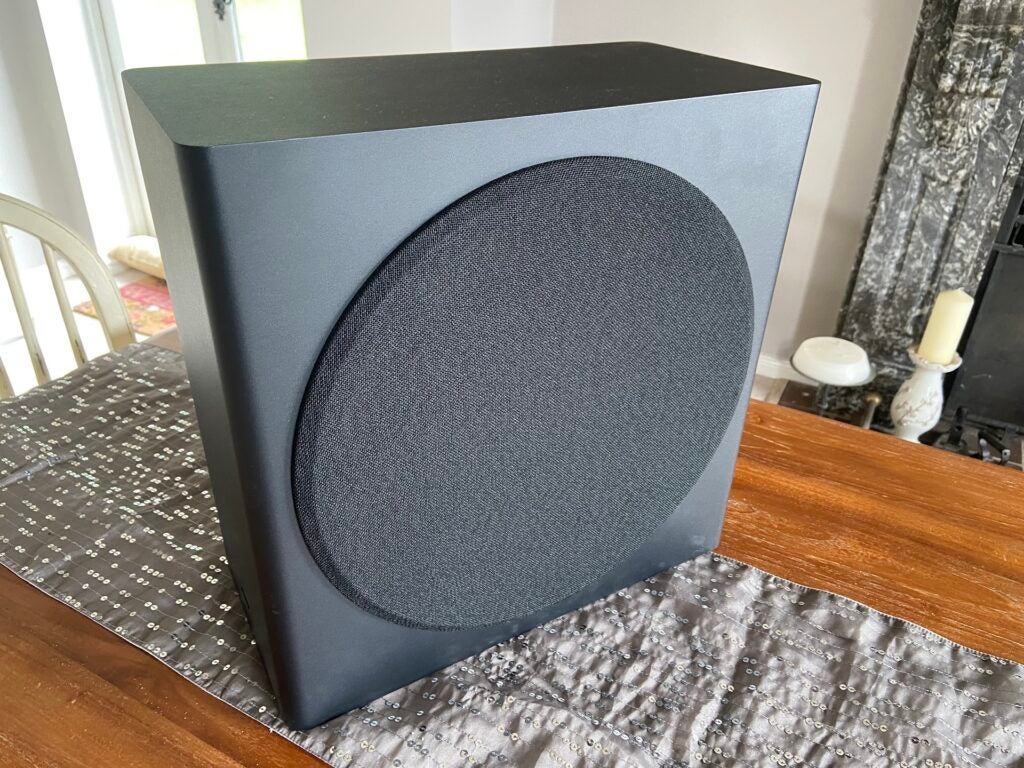
Underpinning all of the sound quality strengths I’ve just described is an exceptional amount of power and aggression. It’s hard to think of any other soundbar brand that moves as much air from compact enclosures as Samsung, or which delivers such an extreme dynamic range at volume without harshness or imbalances colouring the presentation. This helps the sound bar deliver a properly room filling sound, too, despite its lack of any rear channel speakers as standard.
Given how powerful the Q800A is, I hadn’t expected its Q Symphony feature to work very well. Simply because I’d imagined that the soundbar’s speakers would overwhelm those built into a Samsung TV. Though, having tried the feature out with one high-end and one mid-range Samsung TV, Q Symphony is surprisingly effective. The soundstage does get bigger, dialogue seems better positioned (as in, more at the level of the on-screen action), and the TV speakers blend surprisingly naturally with those of the soundbar.
The only issue with Q Symphony mode is that the mid-range loses some oomph – presumably because it has to rein in a bit of horsepower so as not to overwhelm the rest of the mix. This might be enough to persuade action movie fans to turn the feature off, but for much of the time, especially with relatively ‘gentle’ films, Q Symphony is a great addition to the Q800A’s feature count.
Q Symphony isn’t the only reason to be especially interested in a Q800A, either, if you have a newish Samsung TV. For while it may not be a fully-fledged auto calibration system, the Sound Fit system the Q800A can deploy in connection with the mic in your TV improves sound quality, improving the balance of the various elements in the mix and enhancing the delivery of small audio details.
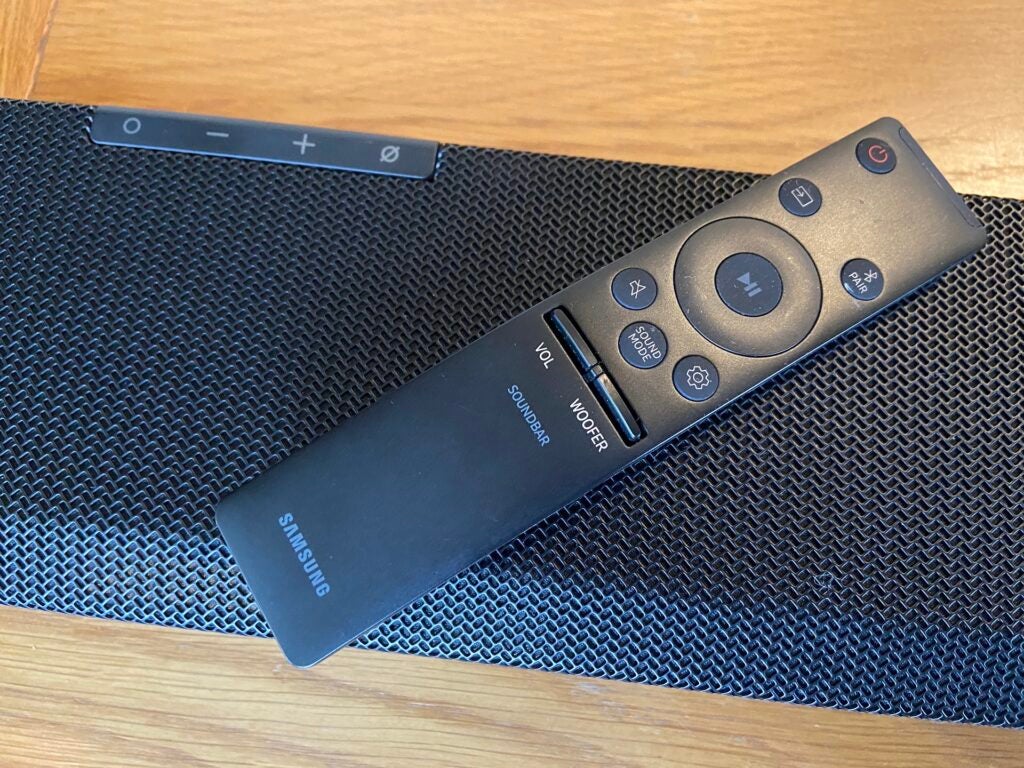
The Q800A’s ability to ‘upgrade’ non-Atmos or DTS:X sources to take advantage of all of its available speaker channels works well for the most part, too. Particularly when it comes to giving 5.1 and 7.1 Dolby Digital or DTS-HD Master Audio tracks a more Atmos-like feel.
While the Q800A is a mostly fantastic movie partner for its money, it does have a trio of flaws. First, dialogue, especially male dialogue, can occasionally sound as if it’s coming from slightly below the onscreen action. Unless you’re using the Q Symphony mode.
Second, given how developed and large the Q800A’s front soundstage is, it almost feels a bit strange not to have it joined by any action coming from behind you (unless you add the optional rears). But I guess you could argue this feeling is only a result of the Q800A being so good.
Finally, as usual with Samsung mid-range and high-end soundbars, the Q800A isn’t as musical as some rivals. Music sounds powerful and dynamic, for sure, but the Q800A can’t adapt its innately muscular approach to music’s often more delicate demands as Ill as some rivals. Though of course, most if not all of those more musical soundbar rivals will struggle to sound as potent with films as the Q800A.
Latest deals
Should you buy it?
You want bang for your buck The Q800A is more powerful than any other soundbar in its price range.
You have a vaulted or heavily beamed ceiling The Q800A’s upfiring speakers won’t deliver good results if you have don’t have a flat and fairly beam-free ceiling.
Final Thoughts
While hi-fi fans might want to think about more musical rivals such as the Sonos Arc, if you’re looking for a soundbar that’s capable of doing justice to even the loudest and most dynamic movie soundtracks, there’s nothing out there right now that gives you more bang for your buck than the Samsung Q800A.
It delivers huge volume levels without succumbing to distortion, while its potent up-firing speakers contribute to a much larger and more immersive soundstage with Dolby Atmos soundtracks than you usually get with a mid-range soundbar. It also offers a much better upgrade path than its predecessor thanks to optional rears that now include up-firing drivers, and the extra features available to owners of Samsung TV prove to be much more than mere gimmicks.
How we test
We test every soundbar we review thoroughly over an extended period of time. We use industry standard tests to compare features properly. We’ll always tell you what we find. We never, ever, accept money to review a product.
Find out more about how we test in our ethics policy.
Tested with a range of soundtracks
Tested over several days
FAQs
Across its 3.1.2 channel configuration, the HW-Q800A has a front left, front right, front centre and two up-firing drivers in the main soundbar, plus the external subwoofer delivering the ‘.1’ bass channel
The HW-Q800A has 330W of power at its disposal



